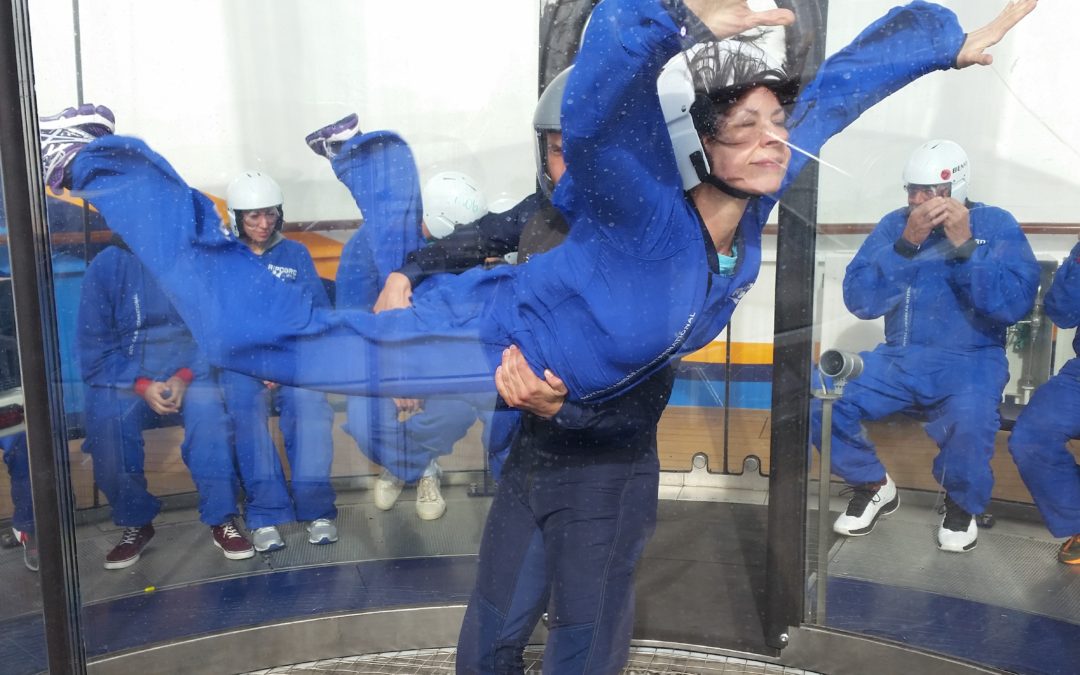For the holidays, I unplugged for 9 days. I went on a cruise with my husband, kids, siblings, their spouses and kids, and my parents. We were a group of 14.
Depending on your family, that may not sound relaxing to you. But it was for me.
I participated in trivia competitions with family members (and won a couple). I read. I ate. I danced. I flew in a simulated skydiving chamber.
And though I confess to reading a few emails when we were at a port, I did not think about my business.
That’s not easy to do as a business owner, but I believe the fresh perspective and renewed energy are worth it.
When I returned I had 100+ emails waiting for me.
What’s the first thing I did? Go through and delete those I had no intention of reading. With that kind of volume, I resort to triage to focus on the emails that matter to me.
In fact for many of us, email triage has become a way of life.
Email Expert reports that subscribers receive 416 commercial emails each month. Emails pile up fast these days. Inbox attention is at a premium.
And yet email remains one of the most effective ways to reach your audience.
Why? Because they check their inbox every day.
According to Consumer Reports, 91% of consumers check their email daily. So while inboxes are more crowded than ever, emails still offer an efficient and effective way of staying in front of your audience.
This is my 37th email newsletter. From my three years of producing monthly e-newsletters I can tell you that the prior 36 have not only helped me stay in front of my audience, but they have also prompted referrals, brought in new clients and generated repeat business.
The payoff from a regular e-newsletter can be substantial.
If you can beat the triage.
Here are 7 tips that will increase the chances that your e-newsletter – or any group email you send – will get opened, get read, and prompt action.
- Offer something useful. Readers want to feel that they benefit from the time they spend reading your email.
- Entertain your readers. If you send something that reads like a textbook or a government proclamation, few people will relate. Tell stories. Make your e-newsletter fun.
- Tailor your message to a specific audience. Generalities water down your message, especially when you are trying to cover too many audiences at once. You want your target audience to feel that your information is relevant to them. If you have very different customer segments, you may need more than one e-newsletter to reach them.
- Write to one person. Use straightforward, conversational language, not jargon.
- Begin with an enticing subject line. This is where the decision to open and read the email happens.
- Be mobile friendly. People are constantly on their smart phones – in line at the grocery store or the bank, sitting in the parking lot or even (gasp) at a stop light. Reading an e-newsletter can be a great way to pass a few minutes of waiting time. Be there for them. Mobile-friendly formats are the reason that ornate and complex designs are giving way to single column formats and larger font size.
- Set expectations and deliver. Let subscribers know upfront what your publication will cover, how often you will send it and when it will arrive. Delivering on these expectations will familiarize readers with your e-newsletter and even generate anticipation!
Lastly…don’t email your list too often. Email exuberance depletes the goodwill you have with your audience. Last December my husband Dan and I received emails daily or even more often from Laithwaite’s Wine, Bed Bath & Beyond, Harney & Sons Teas and others. I unsubscribed from any store emailing me daily during that already frenetic time of year.
Done well, e-newsletters can help brands in adolescence broaden their base and attain their next level of growth.
So as you create your 2015 marketing plan, consider an e-newsletter. Besides the business benefits, it’s also a fun way to stay in touch. And much easier than simulated skydiving.
What’s your email triage strategy? Please share it below in the comments section.
If you liked this post, you’ll love the next one.
To have future posts sent to your inbox...

